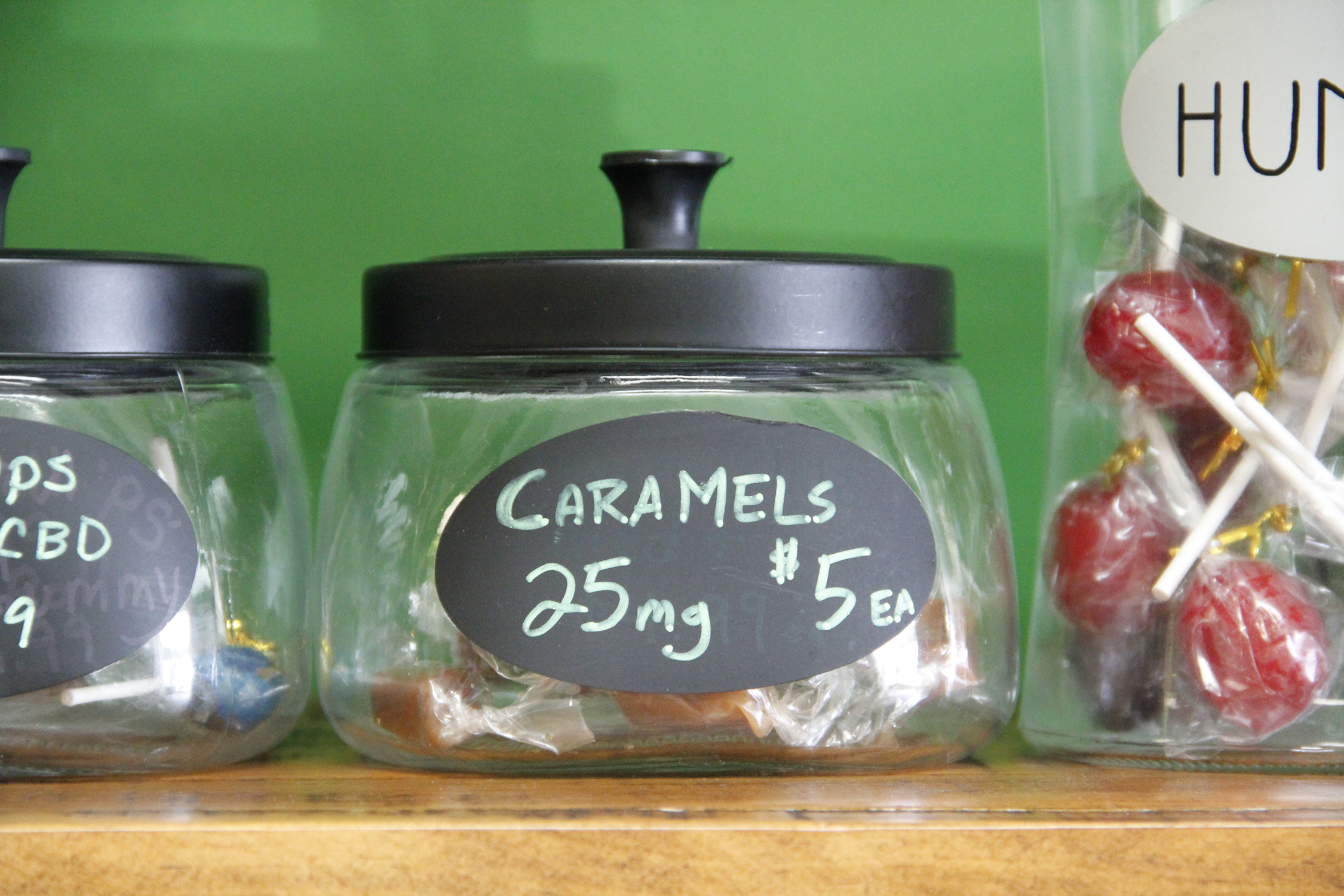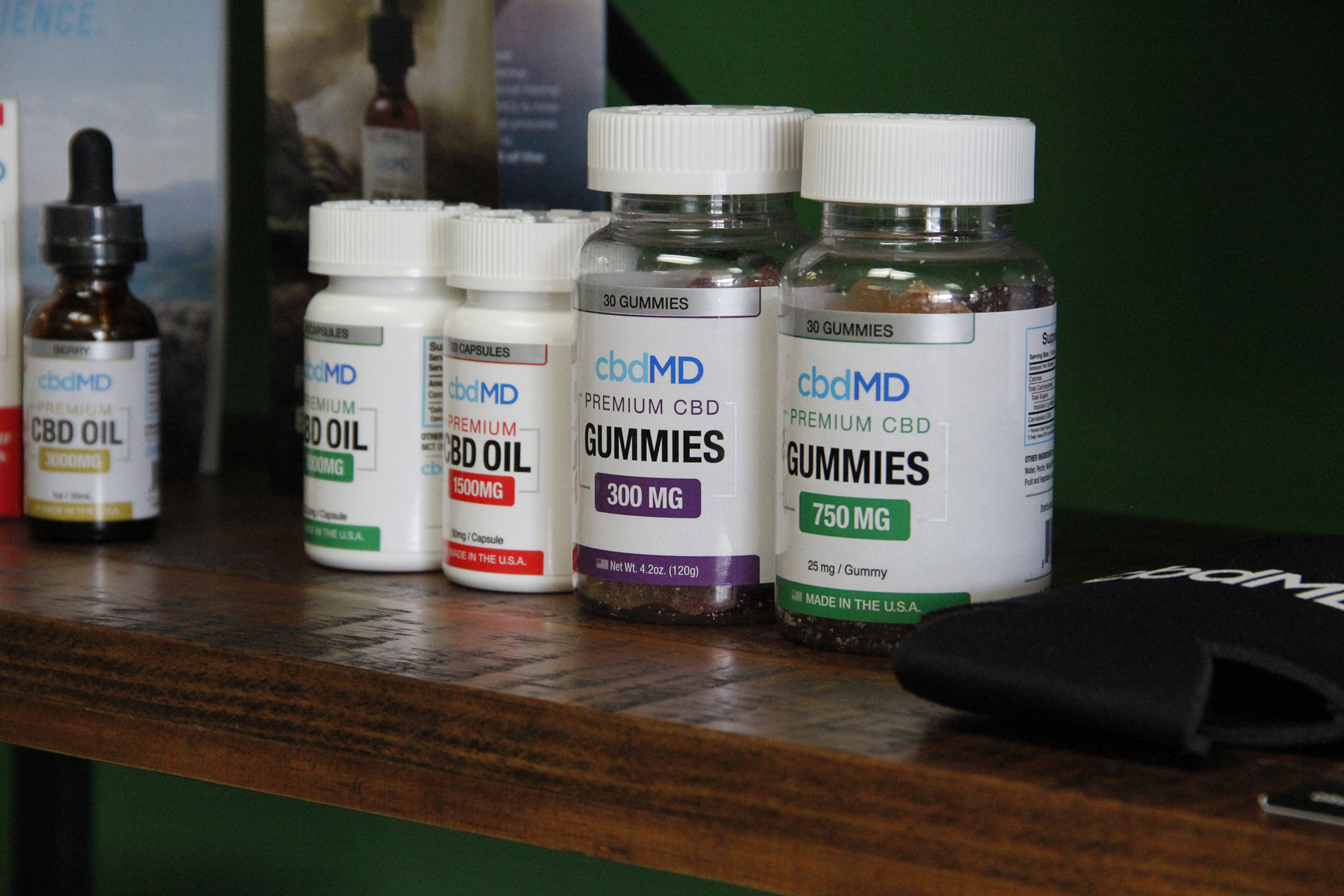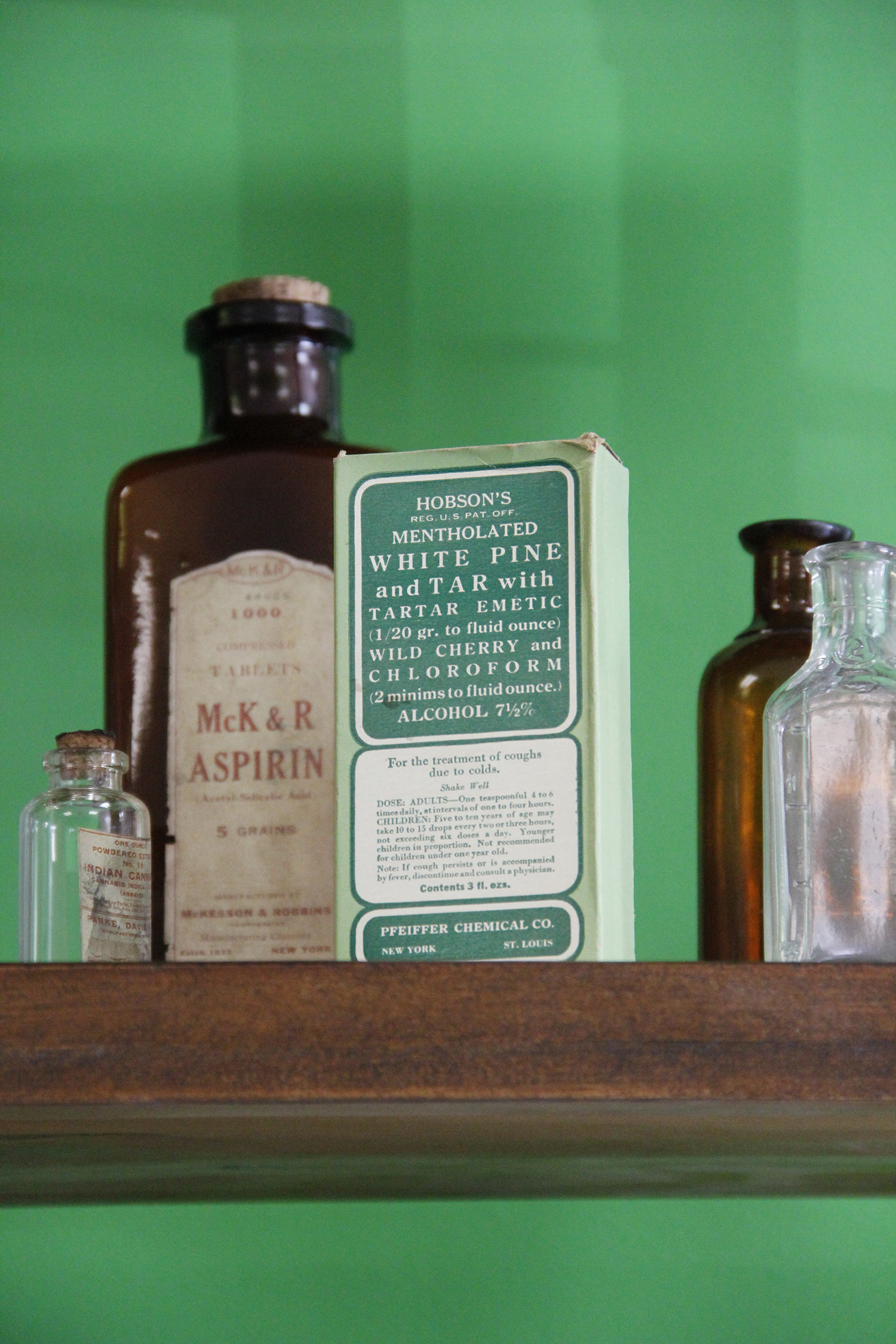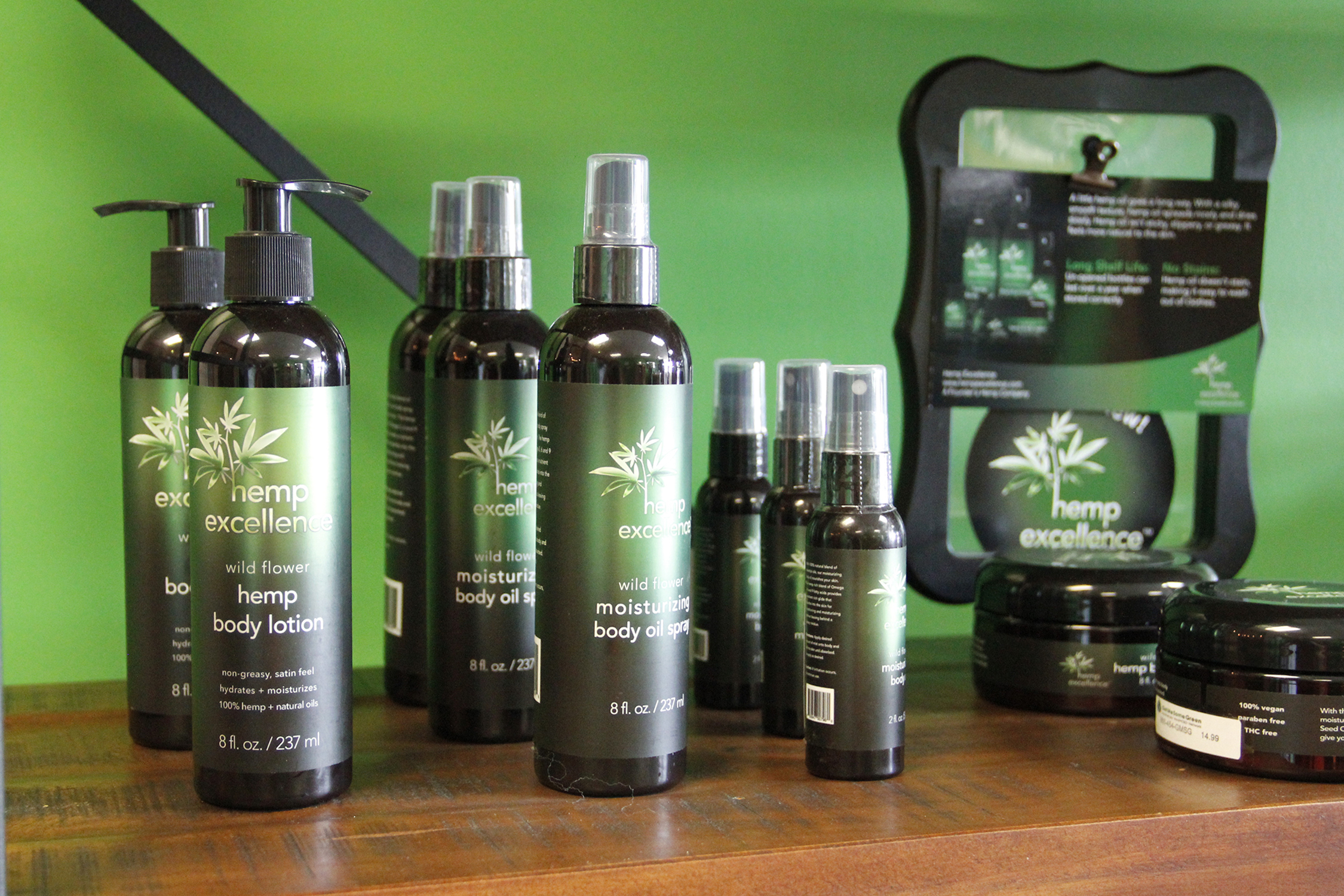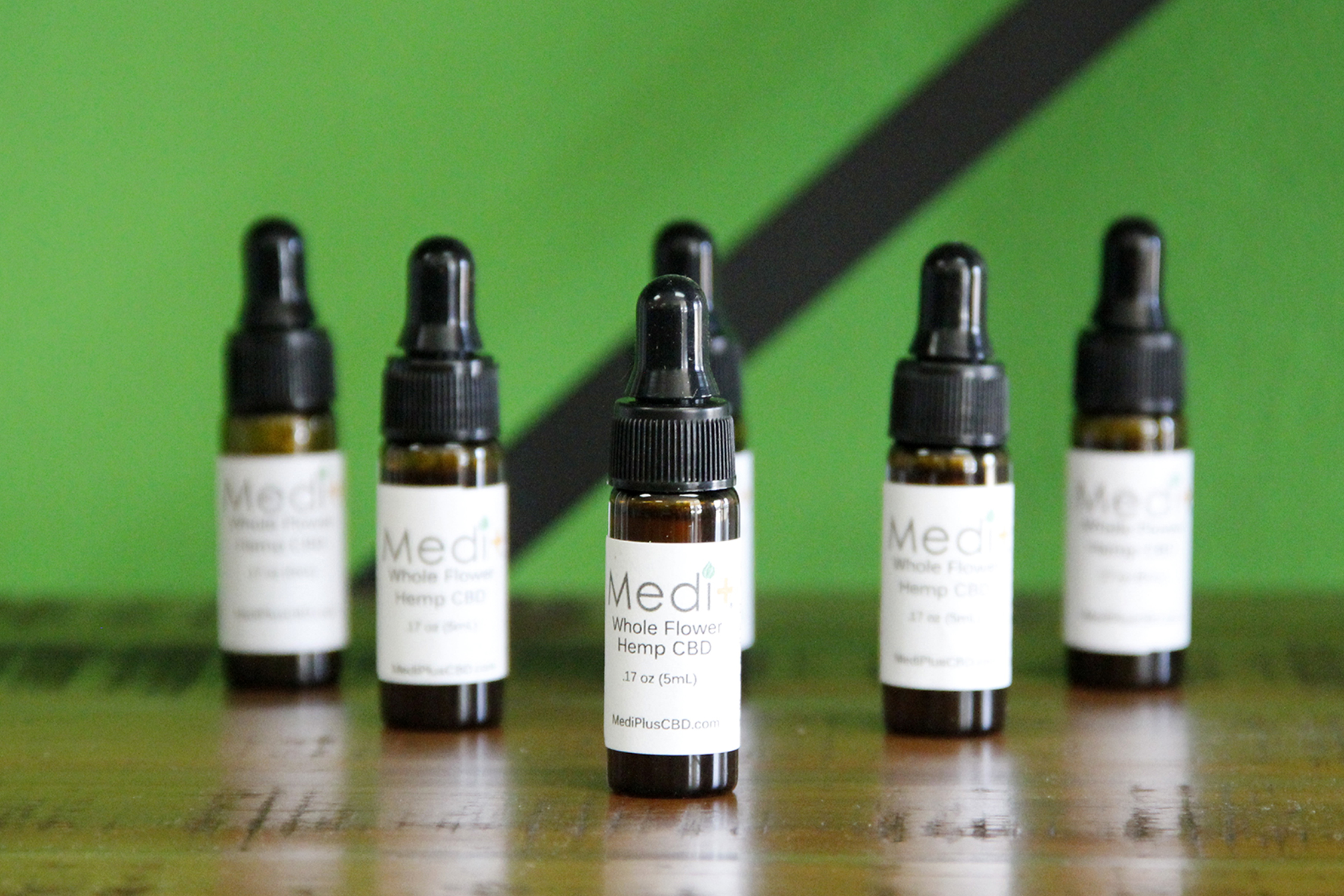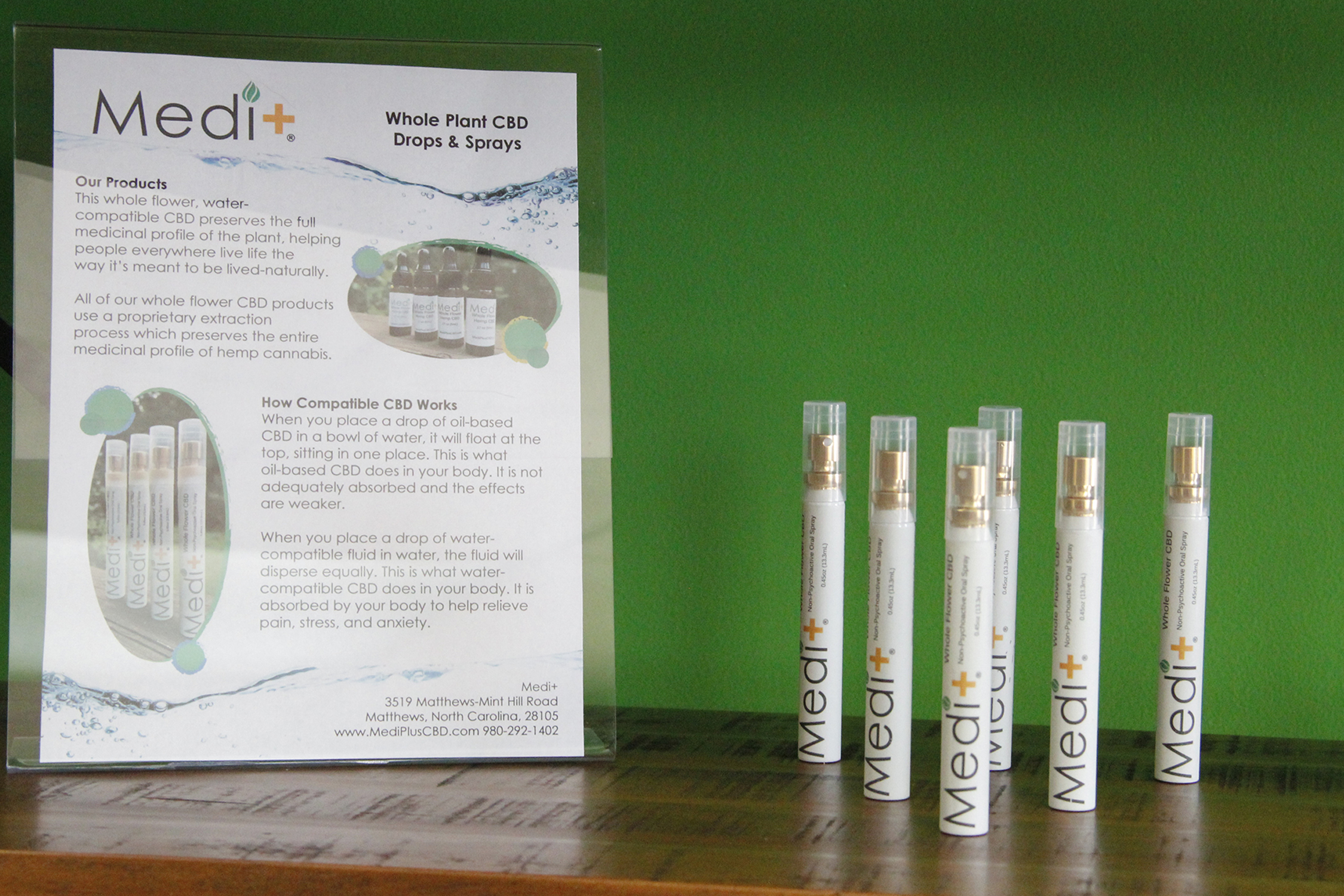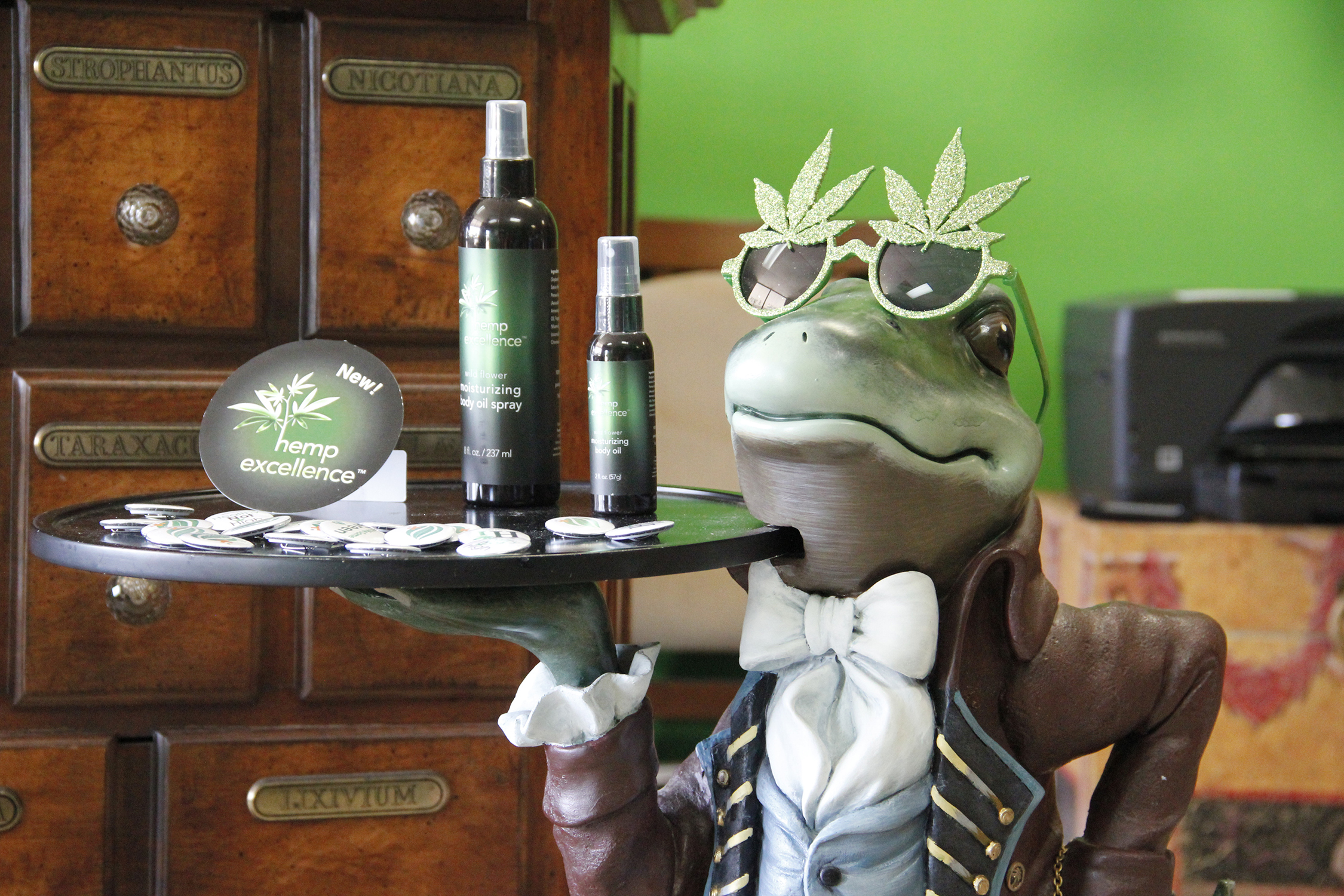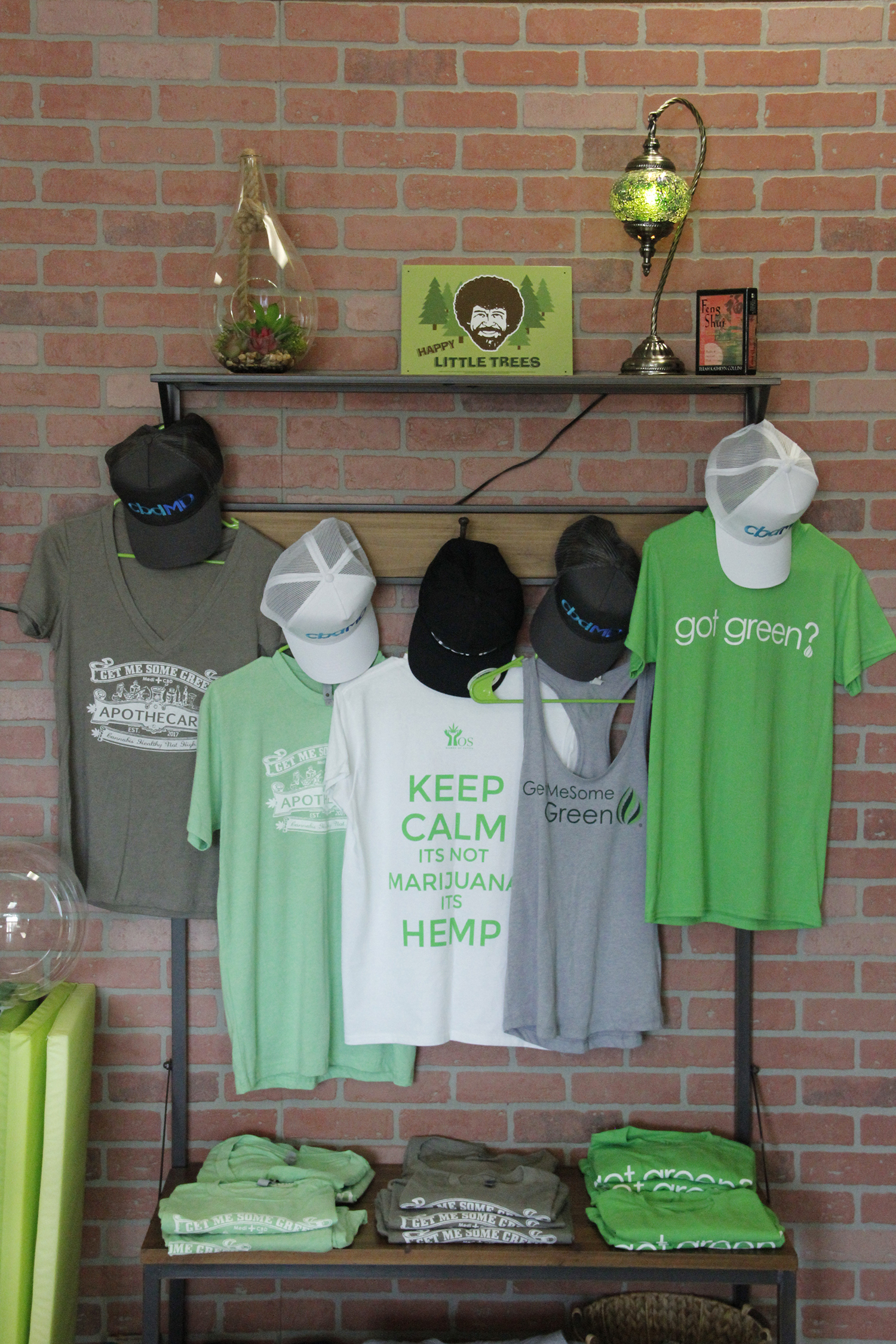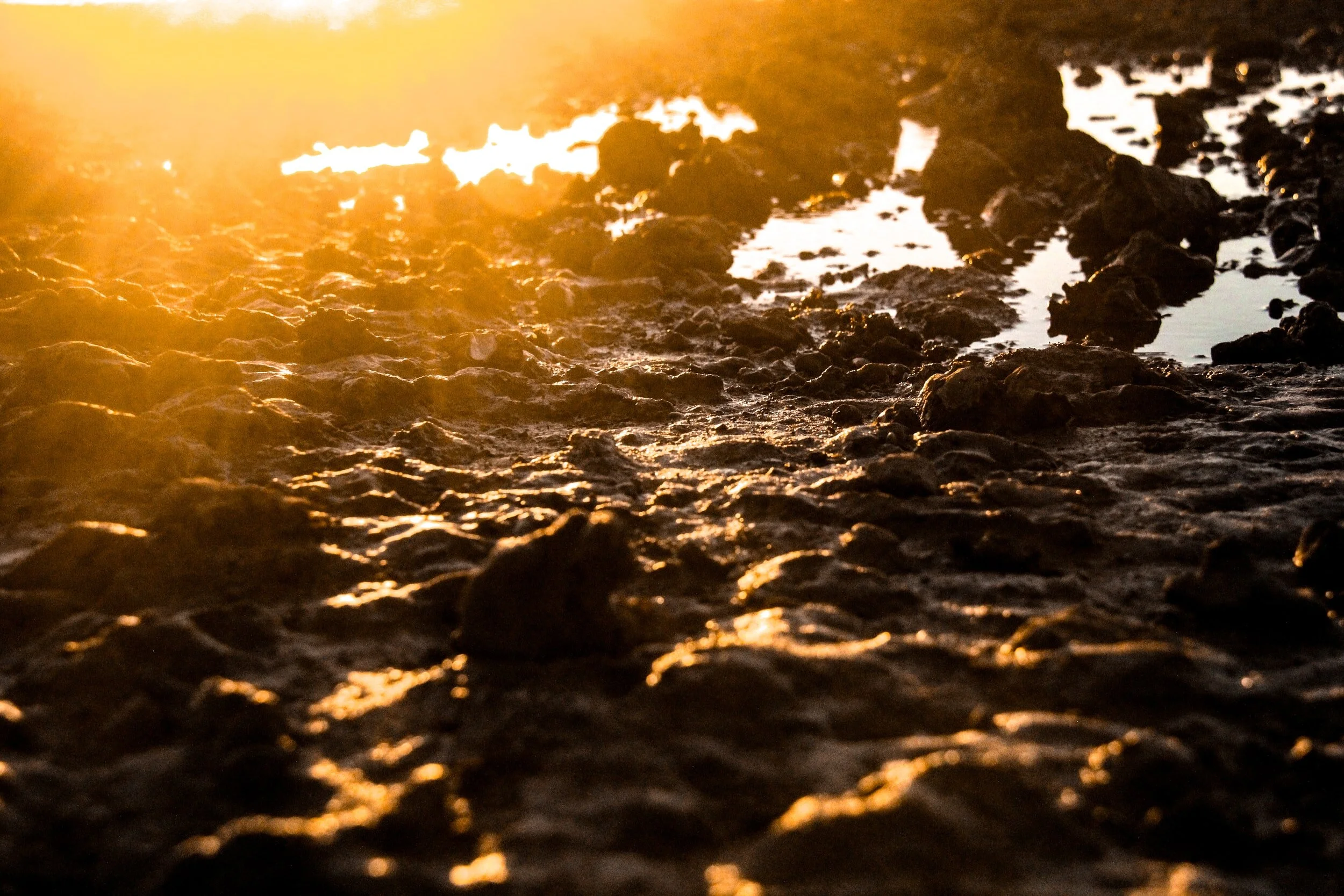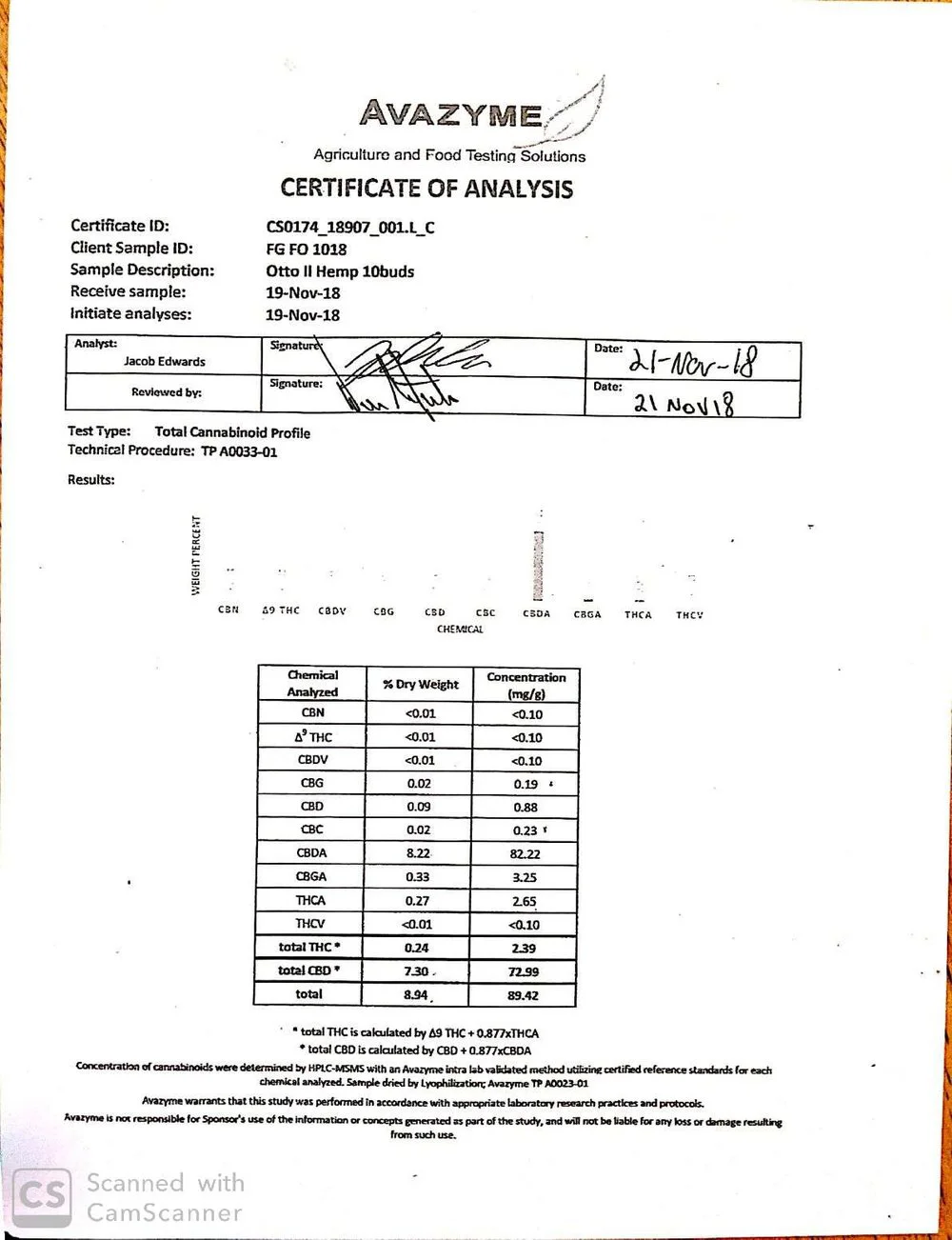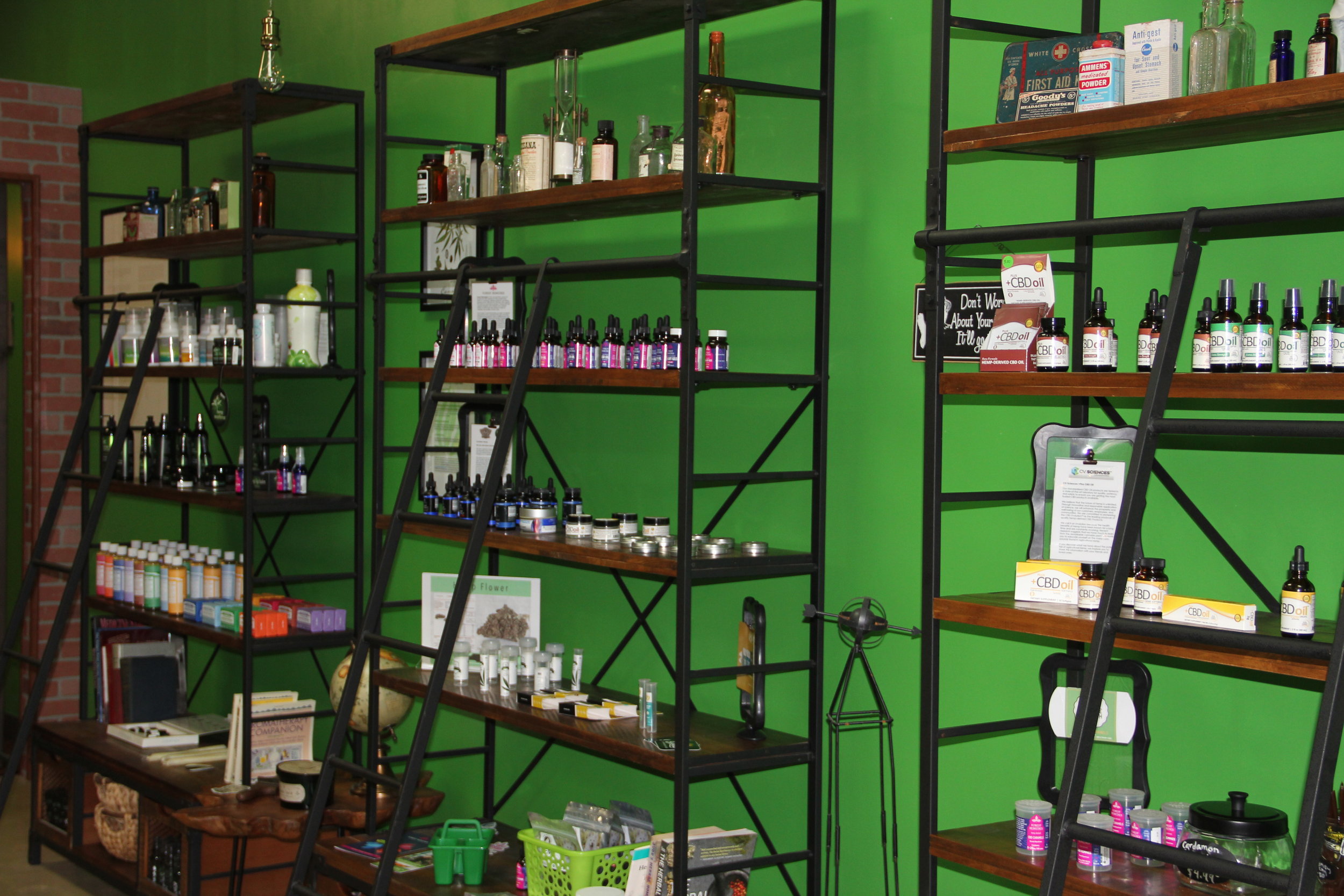“As I learned doing the research for what was supposed to be one article but instead turned into three, CBD is a complex subject. ”
I walked into Get Me Some Green in the Hoods CrossRoad Shopping Center in the same way I’m sure many of their customers do: with a head full of misconceptions. Admittedly, I hadn’t hit the books (Google) yet on the science and the history of CBD, so my expectations for a CBD store were a little more headshop/bud bar than health food store.I had imagined glass cases and shelves full of different CBD products - pills, vaporizers, gummy bears, and baked goods all for my choosing.
But in reality, Get Me Some Green had some classy wooden shelves with a sparse selection of pills, smokable hemp located in glass cookie jars behind the register, and a small assortment of creams and roll-ons. Oh, and one small jar of CBD gummies. They do have a green accent wall though behind the register, which livens up the place. The vibe is much more health food store than trendy bud bar.
Heather and Eric Wiskes, the owners of Get Me Some Green, say there is a very good reason there shop is set up that way: they want their customers to feel comfortable inside of their store. All of their customers. They want to have a place where you are comfortable to bring your kids-a place where your grandparents would be comfortable to shop.
“We’re not a Walmart for CBD, we have very specific products for very specific reasons”
Heather and Eric’s goal is to help demystify CBD and the plants that it comes from and to help our community understand the potential health benefits. That’s why they say the only offer their trusted brands to their clients. "We're not a Walmart for CBD, we have very specific products for very specific reasons.”
In creating a space that’s comfortable for everyone, Heather also wants potential customers to feel alright walking into the shop and asking questions, even if they don’t buy anything. She says her bottles are all on display because she wants her clients to feel secure in picking them up and looking at them, even if they know nothing about CBD, or everything they thought they knew was wrong. “We’re on a mission to provide education and high quality products, both local and national, to really demystify the plant to help the whole community.”
And of course, she wants everyone to stop buying their CBD from the gas station. “Every business has their specialty. Gas stations know their gas. I know my CBD...I always encourage people first get educated before you go buy it. I don’t care where you buy it, but get educated. So if you want something in a specialty arena, go to that specialty store and get educated. And I’m not the only one in the area. There’s a couple of others that are really highly educated but do your due diligence. Anything you’re going to put into your body, do your due diligence.”
After leaving her shop and doing the research for this article, I can understand Heather’s insistence on wanting to educate the community. As I learned doing the research for what was supposed to be one article but instead turned into three, CBD is a complex subject. But hopefully now you know that all those stores aren’t trying to get you high, where its been all your life, and that if you have more questions, you can go ask Heather at Get Me Some Green (or one of the other CBD shops. Just not the gas station.)
